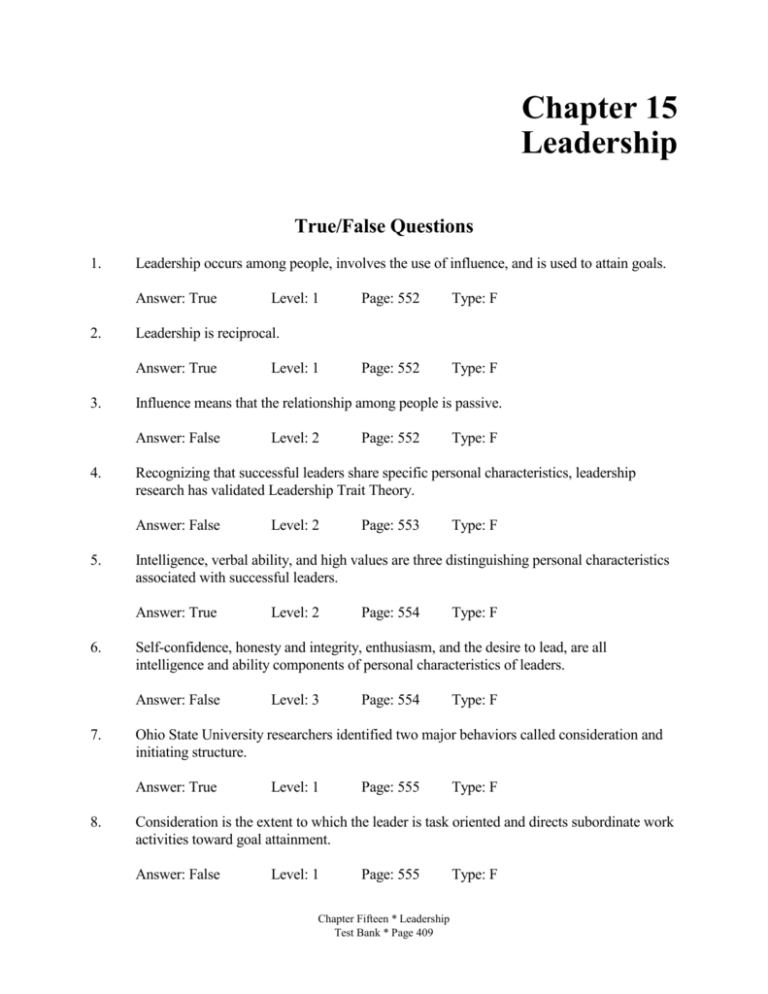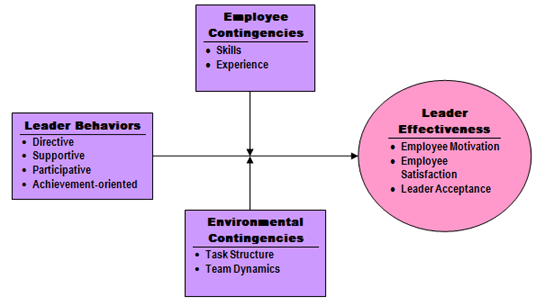Path-goal Theory Could Be Best Described as a ______.
Using the path-goal approach expectancy theory suggests that. The researcher who consistently studied path-goal theory from the 1970s to 1990s is ______.
Path-Goal Leadership theory could be best described as a.

. Understanding path-goal theory can help you determine which leadership style will best motivate and improve your teams performance. In theory it provides a set of assumptions about how various leadership styles interact with characteristics of followers and the work setting to affect the motivation of followers. Believe that outside circumstances control their lives.
Path-goal theory is similar to the situational. Path goal theory could best be described as a. The need for directive leadership increases when employees.
Path-goal leadership is an approach to leadership for which many. The path-goal theory is about how leaders motivate subordinates to accomplish designated goals Northouse 2013. Path-goal theory could be best described as a.
Path-goal theory could best described as a. True 5 TF Participative leadership is effective with subordinates who have a strong need to control internal locus of control. Robert House originally developed Path-Goal theory in 1971.
Best with ambiguous tasks. Once a leader adjusts hisher style to match a followers needs he. Employee characteristics and environmental factors.
Followers are motivated if they think completing a given task with result in a valuable. Path-goal theory could be best described as a. In path-goal theorythe three main components are ______.
Starbucks CEO Howard Schultz has made sure his employees have health insurance and work in a positive environment. The path-goal theory is defined as a leadership theory that specifies the behavior and style of a leader best suited to fit the work environment as well as the satisfaction and performance of his juniors to achieve a particular goal. This highly acclaimed theory was developed in the year 1971 by Robert House and revised once again in the year 1996.
Your example proves that for the leader the challenge was to use a leadership style that best met your motivational needs Northouse 2013. Path-goal does not suggest leaders should be flexible b. Frequency theory best explains _____ while place theory best explains _____.
Path-goal theory suggests all of the following except. Path-goal theory could be best described as a ______. Practice all cardsPractice all cards Practice all cards done loading.
Your mentor was a supportive leader as evidenced by your ability to be a successful. Path-goal requires leaders to adapt to followers needs d. According to path-goal theory which of the following is true.
According to Houses revised path-goal theory a leaders style should vary depending on which of the following. 4 TF A disadvantage of path-goal theory is that its approach could foster subordinate dependency. Quiz 6 Path-Goal Theory.
Using the path-goal approachexpectancy theory suggests that ______. The pathgoal theory also known as the pathgoal theory of leader effectiveness or the pathgoal model is a leadership theory developed by Robert House an Ohio State University graduate in 1971 and revised in 1996The theory states that a leaders behavior is contingent to the satisfaction motivation and performance of his or her subordinates. Pathgoal theory is an approach to leadership that is not only theoretically.
Path-goal does not take followers into consideration c. The Path-Goal model is a theory based on explaining a leaders style or behavior that is best suited to the employee and workplace to achieve a common goal. At its most basic the leader will adopt a style path based on their situation with the aim of achieving an objective goal.
Pathgoal theory is based on motivation principles drawn from expectancy theory. More specifically it explains how leaders can help their followers stay on the correct path toward their goals by determining which specific behaviors will meet their followers needs specific to their current situation. The path-goal theory sees the job of an effective leader as _____.
Path-goal theory is similar to the situational approach in that a. Path-goal and situational both take the work setting into account Ans. The heliocentric theory is best described as a theory that.
Complex but also pragmatic. Quite simply Northouse 2016 describes the path-goal theory of leadership as how leaders motivate followers to achieve goals. Answer of Path-Goal Leadership theory could be best described as a Group of answer choices Great person theory Transformational theory Motivational theory Trait.
Participative leadership is effective with subordinates who have a an internal locus of control. Path-goal theory is a useful theoretical framework for understanding how various leadership behaviors affect the satisfaction of subordinates and their work performance True The researcher who consistently studied path-goal theory from the 1970s to 1990s is. In practice the theory.
He could best be described as which type of leader. Group of answer choices. Using the path-goal approach expectancy theory suggests that.
The path-goal theory can best be referred to as a set of processes in which leaders choose specific behaviors that are good for the employees needs and their working environment so that they may work together to achieve. The different styles of leadership suggested by this theory provide ideas for how leaders can modify their behavior according to a situational experience or employees abilities and needs. The Path-Goal Theory of Leadership is a model which proposes that a leader should change their leadership style depending on their situation.

Chapter 16 Upm Edutrain Interactive Learning

Ch 13 Quiz Pdf Ch 13 Quiz Path Goal Theory 1 According To Path Goal Theory Obstacles Will Always Be Present So Leaders Need To A Help Followers Course Hero

No comments for "Path-goal Theory Could Be Best Described as a ______."
Post a Comment